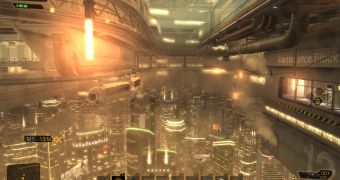Deus Ex: Human Revolution was released last week by publisher Square Enix and developer Eidos Montreal as a prequel to the massively successful and influential Deus Ex, and its sequel, Deus Ex: Invisible War, launched at the beginning of the 2000s.
While I'm quite far into the game, Human Revolution still manages to impress me with its sharp design and refreshing, golden color palette.
By now, the complaint that most of the games these days abuse gray or brown colors is getting a bit old, but it still bears mentioning because developers should certainly draw some inspiration from Eidos Montreal, which could have easily applied the same technique to its latest product. Instead, we're treated with a sharp and vibrant color scheme, with lots of golden tones, that make going through the world of Deus Ex: Human Revolution a joy.
No more are we treated with gritty or destroyed buildings, with chunks of gray or brown inundating the screen of the player. Instead, the futuristic, cyberpunk world of Human Revolution is vibrant and assaults the screen with rich colors, even if its action takes place only at night and in locations, like Detroit or Hengsha (Shanghai) which aren't in their best of states, but still manage to impress.
I might sound like I'm in love with Human Revolution's style, but, after going through a lot of games since the beginning of the year, it's worth mentioning that only Deus Ex and probably The Witcher 2 managed to actually have an impact on me in terms of graphics, while others, like Bulletstorm, came quite close.
What's more, considering other gray and brown games will no doubt arrive in the near future, we should certainly praise titles that take a risk and adopt more unique visual styles, hoping that others developers take note and apply the lessons from Human Revolution.
The game is currently available on the PC, PlayStation 3 and Xbox 360 platforms.

 14 DAY TRIAL //
14 DAY TRIAL //